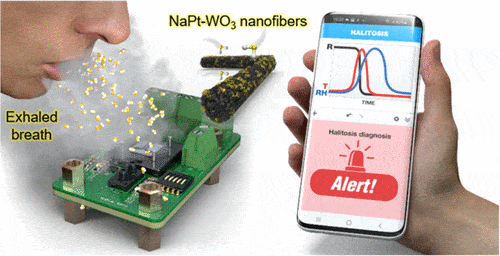Who likes to have bad breath? I doubt there is anyone who enjoys having bad breath, especially when visiting friends and relatives, at a job interview and especially not on a first date. Bad breath can make things embarrassing, but it is also a sign that you may have serious dental problems. Now, a research team has built a thumb-sized portable device that diagnoses bad breath by quickly “sniffing” fumes for the gas that makes it smelly: hydrogen sulfide. To use a term dear to Elio: the electronic “conchetta”, gentlemen.
A little friend who does awkward work
Most people can't smell their own breath. It's a problem, and asking someone to "test" it is embarrassing. There are some anti-bad breath devices that measure small amounts of hydrogen sulfide, but they require analysis with (expensive) instruments in a laboratory, which is not feasible for consumers. Previous studies have shown that when some metal oxides react with sulfur-containing gases, their electrical conductivity changes.
For this, to develop a small real-time bad breath analyzer, Kak Namkoong, Il-Doo Kim and colleagues looked for the right combination of substances that would elicit the fastest and strongest response to hydrogen sulfide in the air blown directly onto it. I study was published on ACS Nano.
How the device that analyzes bad breath was born

First, the researchers mixed sodium chloride nanoparticles (an alkali metal salt) and platinum (a noble metal catalyst) with tungsten. They then electrospun the solution into nanofibers which they heated, converting the tungsten to its metal oxide form.
In preliminary tests of the “bad breath sniffing” device, the mix of equal parts of each metal showed the greatest reactivity to hydrogen sulfide, measuring changes in less than 30 seconds. Although this nanofiber reacted with some sulfur-containing gases, it was more sensitive to hydrogen sulfide, creating a 9,5- and 2,7-fold greater response than dimethyl sulfide or methyl mercaptan, respectively.
Finally, the team coated interdigitated gold electrodes with the nanofibers and combined the gas sensor with humidity, temperature and pressure sensors. Result? A small prototype device about the size of a human thumb.
The device correctly identified bad breath 86% of the time in which people's actual breaths were exhaled directly on it. Researchers say this sensor could be incorporated into very small devices for quick and easy self-diagnosis of bad breath.


